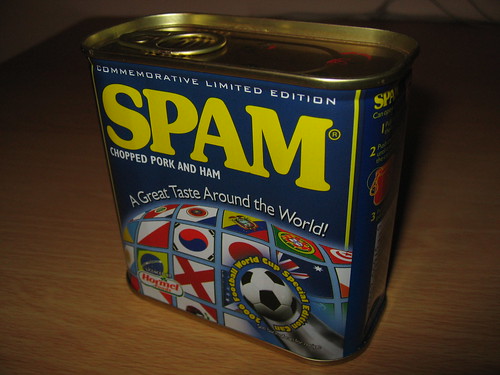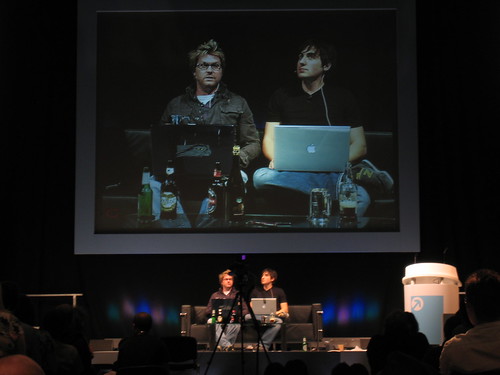a friend of mine
(a book-lover, one of the most admirable bookworms I know) gave this
book to me as a present last year. We both love
London,
we both prefer to read English books in English, and she knows me well
enough to anticipate that I would like this novel by Neil
Gaiman,
Neverwhere.
I confess I hadn't read anything by Neil Gaiman before, but the name
sounded familiar to me. And, as in so many other occasions, once you
find out a little bit on the interwebs and mention the name to a friend
or two and let your friends talk to you about the guy, you end up
wondering how it's possible that you didn't know him. I reckon most of
the (three) readers of this blog don't need an introduction, but let me
just say that Gaiman is known for his writing of the acclaimed comic
book series
Sandman,
and for other novels such as American
Gods. Although
you would be forgiven to think that his actual job is to collect
impressive awards
(Hugo
and
Nebula
among many others). Even if you're not familiar with his books, you may
have watched some of his work: he wrote
Coraline, upon
which the screenplay for the eponymous
film was
based, and, most importantly, he wrote the screenplay of a little marvel
that was too quickly forgotten:
Beowulf.
Oh, and he also wrote the dialogues for the version of Princess
Mononoke
that was screened in English-speaking countries. He has a
blog since
2001, he is on
Twitter, he
possesses a beautiful, beautiful private
library,
and yet another
library
(you can zoom in to read every title on the shelves), he has given some
long
interviews
and, to top it all, he is definitely much better than Chuck
Norris.
Enough said about Mr Gaiman and his enormous talent.

Thirteen years ago Gaiman wrote
Nevewhere,
a TV series for the BBC. A bit later, and not feeling entirely happy
with the many bits that he had to alter or prune during the shooting of
the series, he would rework the screenplay and publish it as a 370-page
novel. You can watch the whole series (six episodes) on
YouTube
(but I recommend you to save it for after you read the book). But I
mentioned London. What does London have to do with this story? This
fantasy novel is set in two Londons: London Above (the one you've
seen: Big Ben, black cabs, bad weather, noisy tourists, gorgeous parks);
and London Below (a magical, dark place under the surface where the
disenfranchised fall; a world linked to London overground by tunnels and
sewers, abandoned tube stations and hidden doors). You will make the
most of the novel only if you have lived in the city, or if you know the
city at least a bit. There are lots of references to real areas, streets
and landmarks, and underground lines and stations: Trafalgar Sq, Tate
Modern, the City, Battersea, Centre
Point,
the ubiquitous
off-licences
and the curry
houses…
When the characters walk in London Above, you can follow them from
Leicester Sq through Soho (“where the tawdry and the chic sit side by
side, to the benefit of both”) and Old Compton St. And when they walk
from Brewer St to Piccadilly, they stop to stare for a moment at the
articles on display at the Vintage Magazine
Shop.
I have wandered around that shop quite a few times. There are also nice
references to the names of tube stations. There is an Earl, with his
court, in Earl's Court. There are black friars. Knightsbridge is
actually a misspelling of the Night's Bridge. One of the main
characters is called Islington, and it is an Angel. We get to know
one of the Seven Sisters. And so forth. I was already enjoying all
these references and word plays, when I read this about Richard Mayhew,
the protagonist: “Richard's offices were on the third floor of a big,
old, rather draughty building, just off the Strand”. I stopped and
re-read that sentence twice. During my last year in London, I worked at
80 Strand — my company was renting half of the third floor of a very
large, old building on the
Strand.
But wait, I thought; it could be any of the other big, old buildings on
that side of the road, or even on the other side. Then, towards the end
of the story, Richard “walked over to the window, and sipped his tea,
staring out at the dirty brown river” and I could discard all the
buildings on the North side of the Strand. I could picture Richard
perfectly, taking a break from work to stare at the Thames and the South
Bank from that privileged position, as I myself had
done
so many times. Gaiman writes concise, elegant and accurate. Also tender
and funny. I had to laugh out loud a few times when I was reading it,
specially with Mr Croup and Mr Vandemar. It seems to me that Neil Gaiman
would be perfectly capable of telling the same story indulging in a
profusion of details and stretching some dramatic effects, but that he
actually writes too well to fall into that trap. Of course, being a
fantasy novel, the characters are not realistic, and there is magic, and
sometimes a thin smell of deus ex machina floating around. Because of
that, I think that you can't engage with the story fully, on the same
level you would with a historic novel, for instance. But it is
interesting to note that Richard, the young Scot working in London who
falls through the cracks to London Below, provides a useful
counterpoint: he is sceptic and ironic about what is happening to him,
he is easily scared, weak, wants to go back home. That makes him the
more likeable to the reader, who can easily relate to him. I wished
there were better descriptions of the places in London Below, because
sometimes I wasn't sure what places looked like, the shape and size of
tunnels, buildings, bridges and roads. I don't even know if there is a
sky above London Below or not; sometimes Richard and his companions
walk in a direction that doesn't seem plausible, and they end up in
places you wouldn't expect. Some features of London appear also in
London Below
(Harrods, the
HMS
Belfast),
but because the “topology” of the “double city” is not clear, I didn't
understand if those landmarks are mirrored, or if the inhabitants of
London Below come up to London Above and take them at night. It is a bit
Escherian, I guess. But that might be on purpose. The characters I liked
the most are Mr Croup and Mr Vandemar, a couple of sadistic assassins,
two refined torturers, funny psychopaths. They fit in the archetype of
the short, cunning, talkative guy and his huge, violent dumb companion.
Mr Croup loves words and talks in the manner of an old-fashioned
gentleman, although his ideas are less candid (“The police? Alas, we
cannot claim that felicity. A career in law and order, although
indubitably enticing, was not inscribed on the cards Dame Fortuna dealt
my brother and me.”). Mr Vandemar eats anything that has, or that once
had, flesh or fur, and is immune to the suffering of the others. You
have to love them from the first pages. Today I skipped through the
first episode on YouTube because I was curious about how these two guys
had been portrayed originally on TV. I recommend you not to do that
until you've read the book — the image of them that gradually appears in
your mind as you read the novel is probably far scarier and more complex
than the image they have on screen (and that's a good thing about the
brief descriptions, I guess). Definitely recommended (although, as I
said, part of the appeal depends on knowing London and some of its
layers).



































